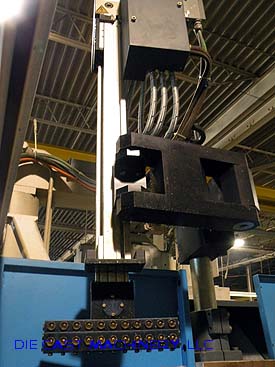Hot Chamber Machines
 Hot chamber machines use a pool of molten metal to feed the die. At the start of the cycle, a pneumatic or hydraulic powered a piston is retracted. The molten metal then fills the "gooseneck". Next, the piston forces this molten metal out of the gooseneck and into the die.
Hot chamber machines use a pool of molten metal to feed the die. At the start of the cycle, a pneumatic or hydraulic powered a piston is retracted. The molten metal then fills the "gooseneck". Next, the piston forces this molten metal out of the gooseneck and into the die.
High pressure injection will fill off the die quickly, which is required so the entire cavity fills before any part of the casting solidifies, resulting in fast cycle times. This is a distinct advantage of hot chamber machines. Another advantage is the ability of melting the metal in the casting machine. However, hot chamber die cast machines do not have the ability to die cast metals that have high-melting points.
Since the mold is filled so quickly, hot chamber die casts also has the problem of air entrapment. This issue can be minimized by including vents along the parting lines. Even highly refined processes there will still be some porosity in the center of the casting. In addition, aluminum cannot be cast since it picks up some of the iron while in the molten pool. Therefore, hot chamber machines are primarily used with zinc, tin, and lead based alloys.
The main disadvantage to either hot chamber or cold chamber die casting is the extremely high start-up cost. However, die casting has numerous advantages, including:
- Thinner walls can be cast
- Precision dimensional accuracy
- Smooth cast surfaces
- Reduces or eliminates the need for post-cast machining
- Increased production due to fast cycle timers
- Ability to cast low fluidity metals
